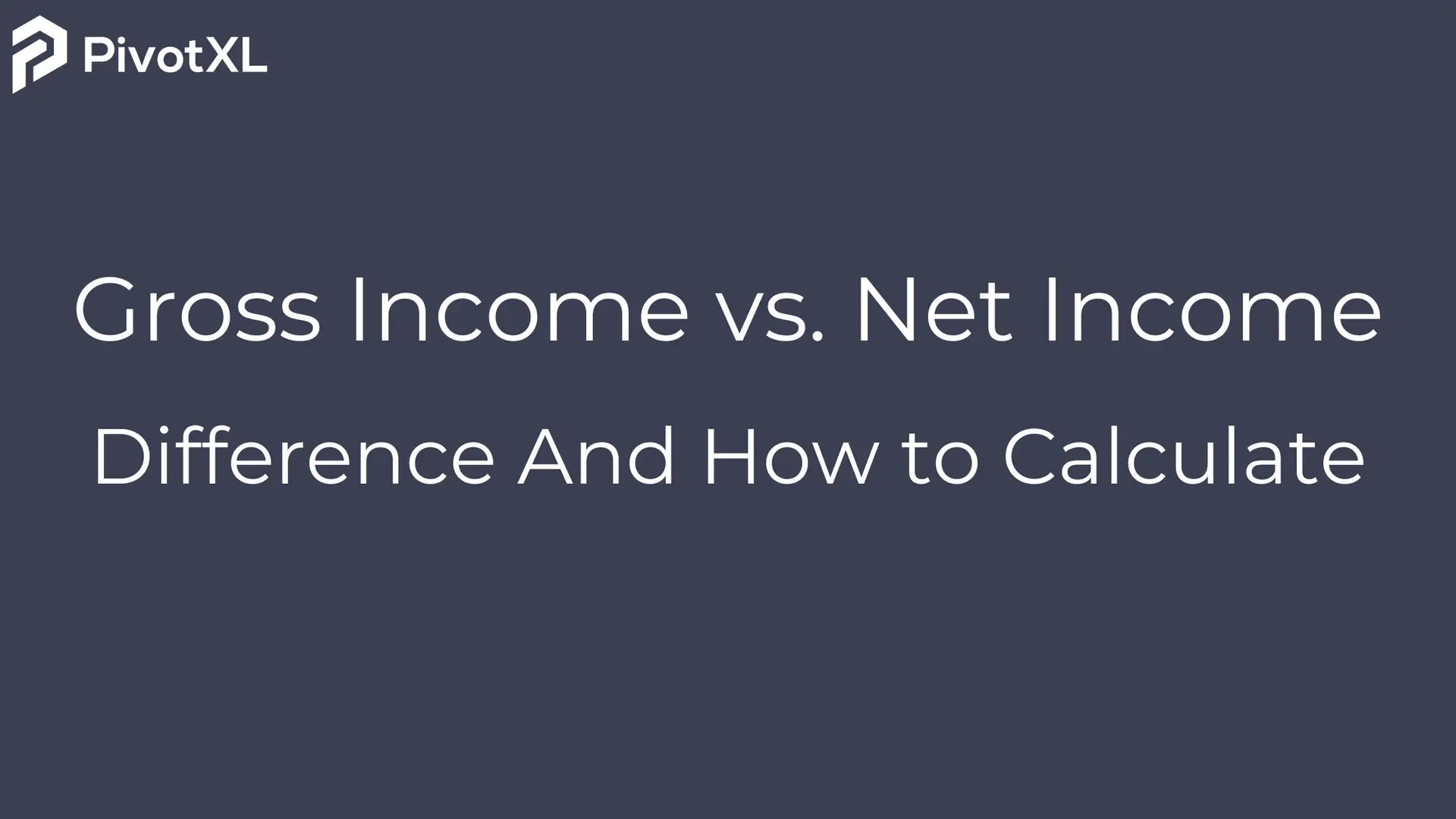Defining Gross Income
Gross income refers to the total earnings of a company before deductions like taxes, benefits, and loan payments. It includes all forms of revenue, such as sales, interest, and investments, and serves as the starting point in calculating available cash flow.
Note: Gross income doesn’t account for the cost of goods sold (COGS). These expenses are deducted separately during the gross income calculation process, which helps in determining net income.
Why Gross Income Matters
Gross income can be found at the top of the profit and loss statement. It reflects all of a company’s revenue streams, such as sales, interest, and rental income, before factoring in other operational costs.
By assessing gross income, stakeholders can quickly gauge a company’s financial health and operational efficiency. It offers insight into how well the business generates revenue from its core activities, excluding expenses like overhead, salaries, and taxes.
Gross Income in Forecasting and Strategy
For businesses looking to predict future cash flow, gross income plays a pivotal role. Understanding this figure allows organizations to plan better, set realistic expectations, and evaluate areas for cost management and investment opportunities.
Net Income Explained: What It Reveals About Your Business
What Is Net Income?
Net income represents the earnings left after all expenses—such as operating costs, taxes, interest, and one-time expenses—are deducted from gross income. Essentially, it’s the bottom-line figure that reflects a company’s true profitability.
Key Deductions for Calculating Net Income
Several costs are subtracted from gross income to determine net income:
- Operating Expenses: Includes costs like salaries, utilities, rent, marketing, and R&D.
- Interest and Taxes: Costs incurred from borrowing or tax obligations.
- One-Time Expenses: Unexpected expenses like disaster recovery or business asset disposals.
How Companies Use Net Income for Strategic Decisions
Net income is more than just a final figure; it is crucial for assessing overall profitability. When a company generates a positive net income, it signals that revenues exceed all costs. Negative net income, on the other hand, could indicate the need for operational adjustments.
Net income is also used in ratio analysis, which helps investors, creditors, and financial analysts evaluate performance through metrics like return on assets (ROA) or return on equity (ROE).
Gross vs. Net Income: Key Differences
Understanding Gross Income
Gross income shows the total revenue from core business activities after subtracting the cost of goods sold (COGS). It’s a measure of efficiency in production, pricing, and sales efforts.
Understanding Net Income
Net income is calculated after subtracting all operating expenses, interest, taxes, and any non-operating items. It offers a complete picture of financial health, highlighting a company’s ability to manage costs while generating revenue.
These two metrics offer distinct views of profitability: gross income gives insights into how well a company produces and sells its goods, while net income provides an overarching view of overall financial health and sustainability.
How to Calculate Gross Income
Step 1: Determine Total Revenues
This includes all forms of income like sales, interest income, or rent.
Step 2: Find the Cost of Goods Sold (COGS)
COGS includes direct production costs such as materials and labor.
Step 3: Subtract COGS from Total Revenues
Formula:
Gross Income = Total Revenues – COGS
Example: If a company sells 10,000 units at $50 each, and each unit costs $5 to produce, the calculation is:
Gross Income = ($50 × 10,000) – ($5 × 10,000) = $500,000 – $50,000 = $450,000
How to Calculate Net Income
Step 1: Start with Gross Income
Begin with your gross income figure as outlined earlier.
Step 2: Deduct Operating Expenses
Operating expenses like rent, salaries, and utilities should be subtracted from gross income.
Step 3: Subtract Taxes and Interest
Include interest paid on loans and tax obligations.
Step 4: Account for Non-Operating Items
Consider gains or losses from investments, asset sales, or other non-core activities.
Formula:
Net Income = Total Revenue – Total Expenses
Example: If the gross income is $450,000 and operating expenses are $382,500:
- Pre-tax income: $450,000 – $382,500 = $67,500
- Taxes and interest (5%): $67,500 × 5% = $3,375
- Net Income = $67,500 – $3,375 = $64,125
This calculation provides a realistic view of a company’s financial standing.
Using Gross and Net Income for Financial Analysis
Key Insights for Decision-Making
Gross vs net income figures are crucial for analyzing business performance. Both metrics can uncover areas affecting profitability, including:
- Cost Management: Reviewing raw materials, labor, and overhead costs for potential savings.
- Production Efficiency: Assessing whether the company is using resources optimally.
- Strategic Adjustments: Understanding cost breakdowns helps companies make informed decisions on pricing, production, and investment strategies.
Best Practices for Financial Stability
Regular Financial Reviews
Conduct frequent reviews to spot trends, potential issues, and areas of growth. This ensures that the business stays on track financially.
Effective Cost Management
Look for inefficiencies and opportunities to reduce waste. Small savings can have a large impact on net income over time.
Tax and Debt Planning
Strategize to minimize tax liabilities and interest payments, maximizing your bottom line.
Leverage Technology
PivotXL offers robust financial planning tools to streamline financial tracking, automate calculations, and produce accurate reports.
Conclusion: Achieving Financial Health
Understanding the differences between gross vs net income is essential for financial planning and decision-making. While gross income provides a measure of core profitability, net income reflects the company’s overall financial health. Together, they offer valuable insights into operational performance and areas for improvement.
For accurate financial tracking and analysis, rely on PivotXL to streamline your financial planning process. Ready to optimize your profitability? Start using PivotXL today for seamless financial insights.




